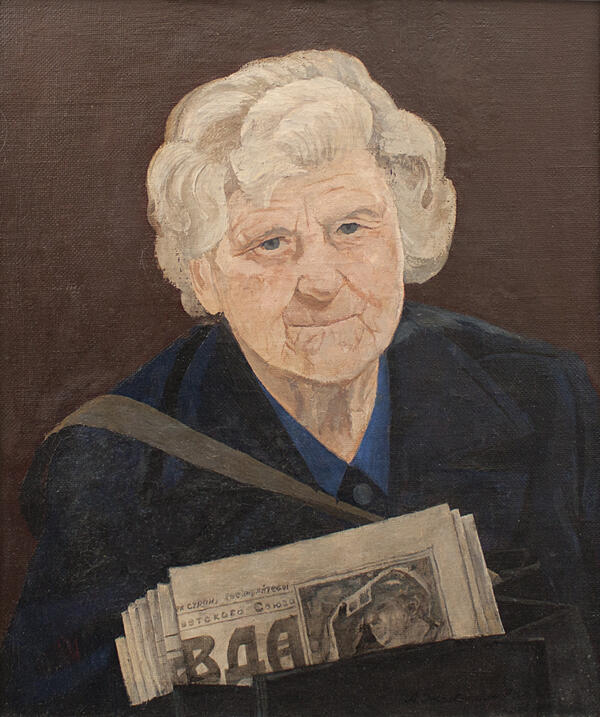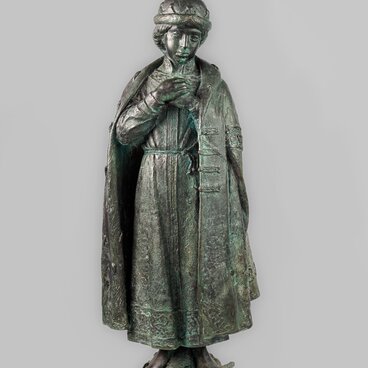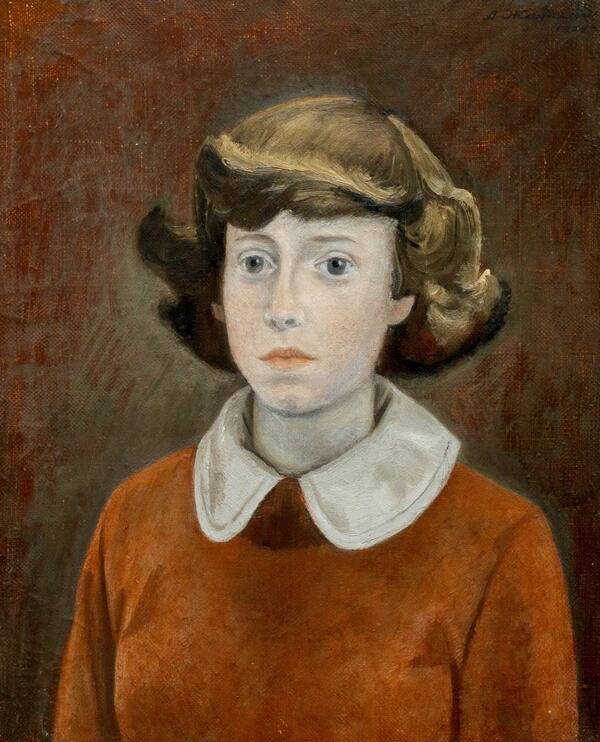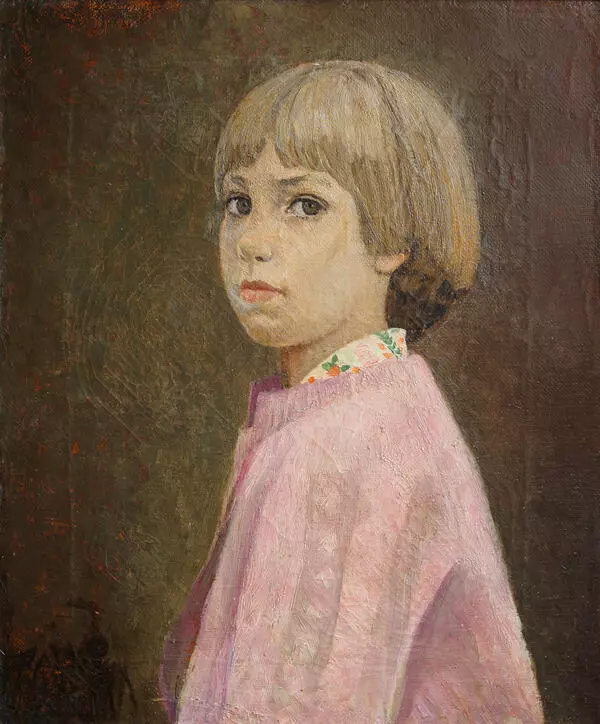The collection of the Uglich Museum features the painting “Postwoman” by Alexey Alexandrovich Zhabsky. Between the 1960s and the 1980s, the Moscow-based artist and his wife came to Uglich to work in the open air.
The couple stayed in vacant rooms of a dormitory of the local pedagogical college, which was located in the former cells of the Epiphany Monastery. The “campus” became the summer address of the Zhabskys for 23 seasons. In Uglich, Alexey Alexandrovich painted monumental conceptual paintings on historical, revolutionary, or contemporary themes. Large canvases were stretched between birch trees, and while the artist was working, he was always surrounded by spectators.
However, these are Zhabsky’s works depicting provincial life and local residents that are of particular interest. The couple enthusiastically joined the life of the densely populated monastery yard. During the years spent in Uglich, the Zhabskys made a wide circle of acquaintances and friends with whom they corresponded in autumn and winter, and who brought all the local news to them. Among the Uglich acquaintances were librarians, students, owners of colorful hens and roosters, old men from the surrounding houses — they all invited the Zhabskys to visit and often posed for the artist. The multi-figure compositions involved “collecting faces”, creating numerous full-scale sketches; some of those works remained with the townsfolk, but most were taken to the Moscow studio.
In one of the letters that regularly came to Uglich from Moscow, the artist wrote to a friend of his,
The couple stayed in vacant rooms of a dormitory of the local pedagogical college, which was located in the former cells of the Epiphany Monastery. The “campus” became the summer address of the Zhabskys for 23 seasons. In Uglich, Alexey Alexandrovich painted monumental conceptual paintings on historical, revolutionary, or contemporary themes. Large canvases were stretched between birch trees, and while the artist was working, he was always surrounded by spectators.
However, these are Zhabsky’s works depicting provincial life and local residents that are of particular interest. The couple enthusiastically joined the life of the densely populated monastery yard. During the years spent in Uglich, the Zhabskys made a wide circle of acquaintances and friends with whom they corresponded in autumn and winter, and who brought all the local news to them. Among the Uglich acquaintances were librarians, students, owners of colorful hens and roosters, old men from the surrounding houses — they all invited the Zhabskys to visit and often posed for the artist. The multi-figure compositions involved “collecting faces”, creating numerous full-scale sketches; some of those works remained with the townsfolk, but most were taken to the Moscow studio.
In one of the letters that regularly came to Uglich from Moscow, the artist wrote to a friend of his,





